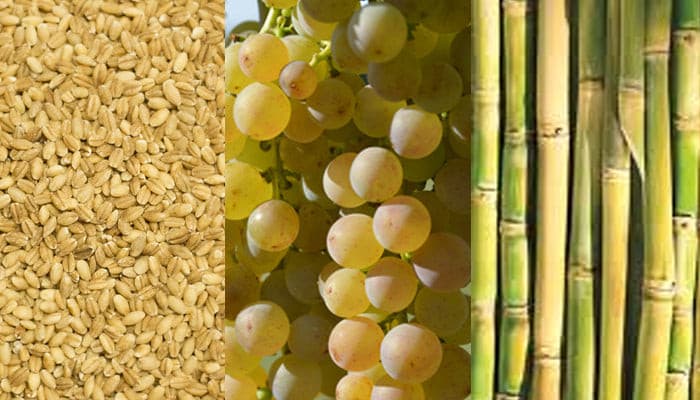At The Scotch Malt Whisky Society, we have been traveling the world in search of the most profound spirits. We began our journey at home – in Scotland, uncovering extraordinarily unique single cask whiskies from Speyside to the Highlands to the wonderful islands drifting in the sea. In recent years, our journey has expanded. And while approximately 95% of our spirits are still Scotch whisky, we’ve recently begun exploring the worlds of Armagnac and rum.
I’ve been pleasantly surprised with just how valuable this exploration of the broader spirits world has been for me. Not only has this exposure opened my eyes to new flavours and experiences, it has fundamentally enhanced my own understanding Scotch whisky. Now I’ve been very open about my newfound love for single cask spirits since first diving into them last year and as a result, many of our members have been asking, just what are the main similarities and differences between whisky, Armagnac and rum anyway?
So without further ado, here is a brief overview of the similarities and a breakdown of what I believe to be the key difference between three of the most popular but misunderstood spirits today. And because there is no better way to learn than by tasting yourself, I’ll go ahead and share a few examples of Society casks that serve as a representation of what I’m talking about. And if you’re feeling adventurous yourself, I’ve put together an Exploration bundle that would give you a chance to taste them all side-by-side at home.
Let’s start with the basic similarities. Whisky, Armagnac and rum are all spirits made through the process of distillation. Distillation is the simple process of heating a liquid to form vapor and then cooling it to create what we call “spirit”. After the spirits are distilled, they are generally aged in oak barrels. The exception being “light Rum” which is clear in appearance and often used in cocktails. Beyond that exception, aging is a critical similarity between the three spirits.
There are, of course, many differences between these spirits from where they are produced to how they are bottled but the key difference as I see it is the fundamental ingredient that serves as the backbone of the entire spirit; grain, grapes and sugar cane.
Grain
Grain is the fundamental ingredient of whisky. Single malt Scotch whisky in particular, is made from a specific type of grain: barley. Barley can be grown all around the world but there are certain climates and are more conducive to healthy barley growth. To make whisky, distillers combine barley with water and yeast to form what is essentially “beer” before distilling it to create new make spirit! That’s right - whisky is essentially distilled beer, which means the two share similar properties that often make for a great pairing. Whisky, as you know, comes in many different styles and flavours, some showcasing the unique characteristics of barley more so than others. For me, Cask 55.50 ‘Biscuit bites’ highlights the core ingredient beautifully. It’s an 11-year-old Speyside whisky matured in a refill hogshead giving way for bright, malty flavours, toasted biscuits, freshly cut grass and pine. To me, this is the essence of barley and it’s fun to taste a whisky that offers such a granular experience.
Grapes
Armagnac is a type of Brandy produced in Southwestern France. Just as whisky is made by distilling beer, Brandy is made by distilling wine. Wine is made from, you guessed it, grapes! In fact, the word Brandy comes from the Dutch brandewijn, which translates into “burnt wine”. While the highly popular style of Brandy, Cognac, is generally known as being a light and fruity spirit, Armagnac is distilled just once, making it far more rustic, robust and dare I say more “whisky-like”. It’s not nearly as sweet as other types of Brandy, which I would imagine is one of the reasons why whisky drinkers have taken an interest in Armagnac recently. A perfect example of an Armagnac that showcases the raw elegance of the white grapes from which it was born is Cask A4.3 ‘A slice of Gascony’. This 2004 Vintage Bas Armagnac offers some incredible notes of stewed fruits, old leather and toasted caramel. It’s a wonderful introduction to what has easily become one of my favorite spirits today.
Sugar Cane
Last but certainly not least is Rum, an historic spirit distilled from sugar cane. It is primarily produced in the Caribbean and Latin America but is also popular in Spain, Austria, USA and New Zealand. For me, rum is undoubtedly the most misunderstood of the world’s most popular spirits. You see, when I used to think of rum, I would picture a sandy on an island in the middle of nowhere accompanied by a sweet, tropical cocktail. While I’m certainly not one to turn down a piña colada here and there, I tend to shy away from anything that is overly sweet. Enter the single cask rum. Cask R8.4 ‘Campfire in Nicaragua’ is the perfect example of what I’m talking about. It offers an intoxicating profile of dark liquorice, tobacco leaf and cedar wood with just a hint of tropical fruit from the natural sugarcane of which it was created.
So there we have it – a brief overview of three beautiful spirits and the fundamental ingredients and flavours that distinguish each. Eager to explore these yourself? As promised, we’ve put together an Exploration bundle so that you can embark on the journey yourself. Hey it’s a tough job but someone has to do it!



